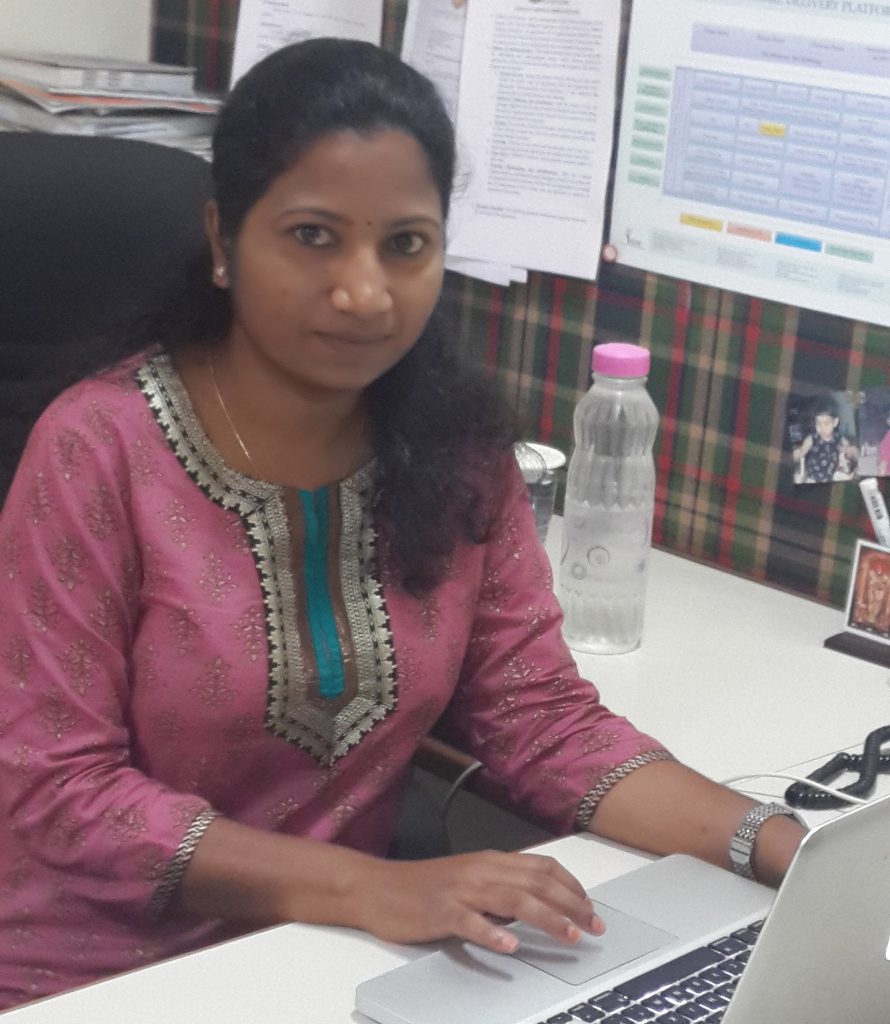


With their versatility they are able to drive quality outcomes. They set an inspiration to their juniors and with their outstanding performance, Srishti has gained innumerable presence from across the world. Yes, we are talking about our valuable employees, who have given substantial amount of contribution towards the company’s growth. Srishti recognizes those employees who have set a good example to others. With its abiding commitment to work, Srishti nurtures talents and gives enough support for their career growth. In this article, Dr Gopika C.G shares her journey with Srishti.
A brief: Dr. Gopika C.G, Clinical Analyst
Joined for the position of Clinical Analyst Trainee in the year 2011. With her remarkable performance she has delivered quality output. Her passion towards work and her dedication has inspired many employees. She now works as a clinical Analyst.
Let us know the secret behind her success:
1. What challenges have you faced while analyzing the requirements from different hospitals?
While analyzing requirements from different hospitals, the biggest challenge that I encountered was tracking the amount of functionalities being added as a basic product road map or to be done based on customization. If it is added as a product road map we had to analyze not only one client but all the other clients work flow as well. This helped in keeping the integrity of project management.
2. Keeping patient safety and better patient care in mind, what drives you in decision making process on product development?
Considering maximum number of deaths in hospitals due to medication errors and human errors in care management, we have tried our level best to counter these errors while developing any functionality of PARAS. This has been done by alert mechanisms and notifications to clinical as well as administrative users. By these techniques we are successful in eliminating the possibility of human errors in terms of patient care.
3. What is your take on quality control procedures in hospitals?
As mentioned in Six Sigma, ‘what cannot be quantified, cannot be managed’. Quality control in hospitals need to be looked upon with the same approach. Quality control processes set up in hospitals need to be analyzed based on the output and the need. The need of processes and output of these processes can only be gauged by quantified data and analytical reports. A strong HMIS provides the required reports to serve this purpose and help administrators to take apt decisions.
4. What was the response of clients after the successful launch of your products with good outcomes?
Successful launch of products comes with smooth functioning and adoption of modules. Clients have agreed to install PARAS in their hospitals after reviewing the current products in the market. They were very eager to see the impact on the operations and administration in terms of monetary as well as quality improvements. They were equally involved in the process of adoption of modules through user training. Change management was handled well by both parties by complete dedicated involvement.
5. What are some of the drawbacks in today’s healthcare industry?
Health Care Industry still stands at the midway between being considered as functioning for charity and being considered as a profitable industry. The outlook and strictness in capturing various data still remains a hard task. The importance of appropriate data capture is relevant to the higher levels of management and is very slowly being made understandable to actual users.
6. Lastly how has Srishti supported you in your career endeavours?
Srishti has given me a platform to enter into vast Health Care IT field. From the day one, my encounter with Srishti, has given me a wide platform to learn and perform. Srishti’s working culture has boosted my ability to think analytically and give valuable output. The support which I have received from my peers and seniors has shaped my confidence and thinking abilities.


